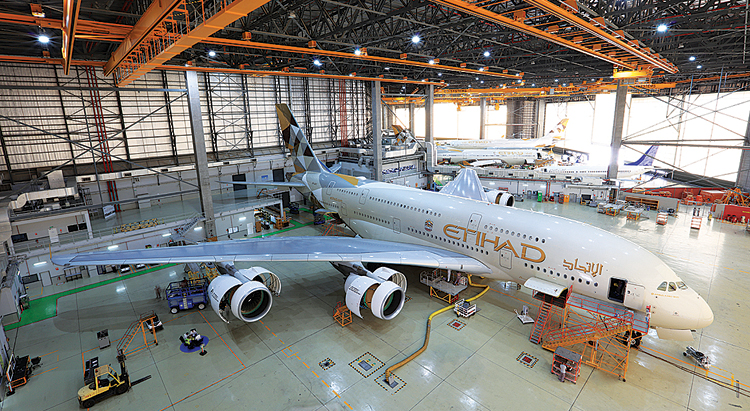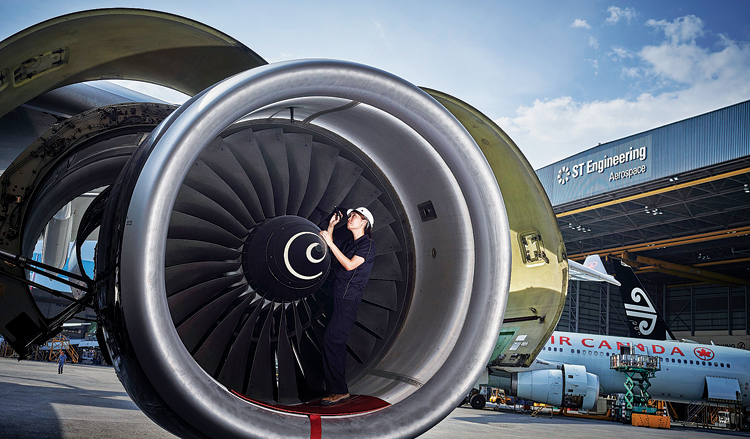Post Covid-19 — Aviation MRO Trends
The need for agility is now more obvious in MRO and the use of digital technology from data collection and tracking to supply-chain analysis is the most effective way to implement these changes and improvements

As COVID-19 proliferated across the world in 2020, the aviation industry lost over $118 billion with many airlines pursuing bankruptcy protection or ceasing flight operations entirely, according to the International Air Transport Association. The pressure on cash flow of airlines and the reduced demand for air travel led them to put thousands of aircraft into storage, retire twice as many as normal, convert some for cargo and cancel or defer deliveries of new planes. This now means cash preservation will remain a top priority for airlines, which is not good news for aerospace manufacturers and Maintenance, Repair and Overhaul (MRO) service providers.
After the pandemic was declared, the global fleet in service was reduced by more than 50 per cent, to about 13,000 aircraft. Today, the 2021 fleet has increased to about 23,700 aircraft. The forecast is that by 2031, the fleet will be more than 36,500 which is still low from pre-COVID projections that had put the 2021 global fleet at 28,800 and the 2030 fleet at more than 39,000. For MRO companies, a smaller fleet translates into lesser work.
The early retirement of planes will reduce aerospace sales of new parts because of increased competition from the flow of used components and green-time engines from retired aircraft. It will take about three years to consume these used serviceable components. Parts demand is expected to be 33 per cent or $60 billion, below combined pre-COVID projections for 2020 and 2021. While the market is beginning to recover, the long-term MRO growth trend is now roughly half of pre-COVID expectations.

Despite the reduced expectations for MRO, the compound annual growth of the sector till 2031 is bullish at three per cent. The combination of near-term lower demand and long-term growth prospects has created an attractive environment for private equity investors and interest in MRO is high.
For years, the narrow-body share of the total fleet has increased due to the improving range capability and attractive seat mile efficiency particularly of low-cost carriers. This trend is expected to continue as more airlines align fleets to the demand realities of COVID-19. One potential consequence of the shift of global fleet toward narrow-bodies and away from wide-bodies, is an imbalance in the supply and demand for airframe MRO among regions. Asia Pacific, typically the region to which wide-body heavy maintenance is most outsourced, might see an abundance of supply while hangar space would be much tighter in other regions of the world.
A SLOW CLIMB BACK FOR MRO
With more than half the global fleet on the ground in the spring of 2020, and lower utilisation of the remaining aircraft, airlines sought to preserve cash by deferring as much maintenance as possible. Plans for nonessential modifications were cancelled or deferred and the host of available engines on grounded aircraft with remaining green time were used to put off engine shop visits to 2021 or later. COVID-19 is estimated to have lowered spending on MRO by about $40 billion in 2020. The $91.6 billion expenditure that was anticipated pre-COVID in 2020 was pruned to $50.3 billion. Some of the $40 billion loss in 2020 demand has been pushed into later years as aircraft return to normal utilisation patterns. However, much will be permanently lost as aircraft are retired early and expensive late-life checks are no longer needed.
COVID-19 is estimated to have lowered spending on MRO by about $40 billion in 2020
The timing of MRO’s return to pre-COVID levels of expenditure is determined primarily by recovery in passenger demand which in turn, is driven by economic recovery, traveller sentiment and the pace at which herd immunity is reached through vaccinations. In an accelerated recovery scenario wherein international and domestic passenger demand rebound at a similar pace, MRO spending would recover by 2022.
Oliver Wyman’s Global Fleet & MRO Market Forecast Commentary 2021-2031 is an elaborate assessment of the ten-year outlook for the commercial airline transport fleet and the associated MRO market. As per the report, over the short term, MRO demand is forecast to grow 50 per cent between 2021 and 2023, an increase of over $30 billion, as fleet size and utilisation gradually get back to pre-COVID levels. Maintenance events deferred in 2020 will also provide a short-term boost, as certain maintenance tasks will have to be completed prior to aircraft re-entering service. After this initial wave, MRO growth is expected to be moderate. From 2023 to 2031, MRO demand is expected to grow only 1.8 per cent annually as fewer deliveries in the first part of the decade mean fewer aircraft will reach shop visit and heavy airframe check thresholds.
Post-COVID, airframe MRO is the most buoyant segment as calendar time criteria drive most major inspections. While regulators and OEMs have provided short-term flexibility in scheduling airframe maintenance, aircraft in storage that pass airframe check thresholds must undergo the corresponding maintenance before they can return to service. With over 2,500 aircraft expected to be removed from storage in 2021 and 1,500 more in 2022, there may be a short-term capacity crunch involving airframe as many of these aircraft will need checks completed before they can return to service. This mass return to service in the next two years could create a demand bubble as there will be a number of aircraft due for checks in the same timeline.

The short-term COVID-19 impact on the other MRO segments will be more significant than for airframe MRO, as maintenance for engines and most components is driven by utilisation, primarily accumulated flight hours and flight cycles. This had led to a drastic reduction in the total number of hours and cycles accumulated in 2020, which has directly affected engine, component, and line MRO compared with pre-COVID expectations. With retirements in 2020 nearly 2.5 times more than average, there are estimated 2,000 available engines with usable green time. This supply is forecasted to postpone nearly 1,700 scheduled shop visits over the next five years, saving operators almost $1.5 billion in the short term. Component MRO, which is made up of wheels and brakes, auxiliary power units and avionics, accounts for 45 per cent of total component MRO. After recovery, the component market is projected to grow at a CAGR of 1.9 per cent annually in the second half of the decade.
The distribution and growth of line maintenance expenditure closely matches the distribution and growth of the fleet. In 2019, narrow-bodies were 58 per cent of the fleet and 62 per cent of line maintenance. However, by 2031, narrow-bodies are expected to be 65 per cent of the fleet and 68 per cent of line maintenance spending.
Post-COVID, airframe MRO is the most buoyant segment as calendar time criteria drive most major inspections
Over the next ten years as more, 1990s-vintage aircraft reach retirement age, their share of the fleet will decline; but they will still have a disproportionately large share of MRO because of their advanced age. By 2031, 1990s-vintage aircraft are expected to account for 33 per cent of the fleet and 37 per cent of MRO. Aircraft built between 2010 and 2019 are projected to increase to 44 per cent of the fleet but 33 per cent of MRO, given that only a small portion of that fleet will have expensive heavy checks or shop visits.
India, where the fleet has also surpassed pre-COVID size, is expected to double its fleet by 2030, and see significant growth in its MRO market. By 2030, the Indian MRO market is also projected to double to $3.7 billion, but it will still be 36 per cent below its projected pre-COVID value for the end of the decade. Even with lowered expectations for spending in 2030, India is still expected to see an increase in market share as it grows from two percent of the 2019 MRO market to 3.4 per cent in 2031. MRO demand in India could grow to as much as $4.1 billion in 2031 or as little as $3.4 billion, depending on passenger demand recovery.
DIGITAL MRO
As we look at MRO trends, data-driven technologies are at the forefront of optimisation plans for the future. The digital MRO market significant transformation in data analysis is due to the increasing adoption of Internet of Things (IoT), Artificial Intelligence (AI), Augmented Reality (AR), blockchain and big data analytics. MRO service providers are focusing on digitalising their software to learn things, facilitate intelligent memory use and task recognition as well as improve scalability. AI segment in MRO is projected to grow at the highest CAGR from 2020 to 2030. The growth of this segment can be attributed to the increasing demand for predictive maintenance, part failure analysis and troubleshooting. The upward curve of this technology promises more innovation thereby expanding and increasing the benefits to all.
When shortages and shipping disruptions occurred during the COVID-19 pandemic, it highlighted the inventory and supply chain inefficiencies and exposed a lack of flexibility in the system. The need for agility is now more obvious in MRO and the use of digital technology from data collection and tracking to supplychain analysis is the most effective way to implement these changes and improvements.





